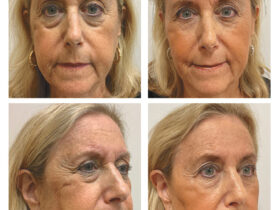By Theresa Vergo, PA-C
 Regular exercise stands as a formidable shield against the rising tide of noncommunicable diseases (NCDs), underscoring its paramount importance in global health. These diseases, encompassing conditions like cardiovascular diseases, diabetes, cancer, and respiratory disorders, exact a heavy toll on individuals and healthcare systems alike. Exercise serves as a potent countermeasure, offering multifaceted benefits that extend beyond physical fitness. Engaging in regular physical activity helps maintain healthy body weight, regulate blood pressure, improve insulin sensitivity, and enhance cardiovascular health. By mitigating risk factors associated with NCDs, exercise emerges as a proactive strategy for disease prevention, reducing the burden on healthcare resources and fostering a higher quality of life.
Regular exercise stands as a formidable shield against the rising tide of noncommunicable diseases (NCDs), underscoring its paramount importance in global health. These diseases, encompassing conditions like cardiovascular diseases, diabetes, cancer, and respiratory disorders, exact a heavy toll on individuals and healthcare systems alike. Exercise serves as a potent countermeasure, offering multifaceted benefits that extend beyond physical fitness. Engaging in regular physical activity helps maintain healthy body weight, regulate blood pressure, improve insulin sensitivity, and enhance cardiovascular health. By mitigating risk factors associated with NCDs, exercise emerges as a proactive strategy for disease prevention, reducing the burden on healthcare resources and fostering a higher quality of life.
The Science of Exercise and Health
Physical activity has been shown to offer a wide spectrum of benefits, ranging from cardiovascular health to mental well-being. Engaging in regular exercise boosts cardiovascular fitness, strengthens muscles, improves bone density, and enhances metabolic functions. Furthermore, exercise plays a pivotal role in weight management, reducing the risk of obesity-related chronic diseases such as diabetes and hypertension.
Exercise for Mental Well-being
Beyond its physical advantages, exercise emerges as a potent catalyst for mental well-being. Exercising releases endorphins, the body’s natural “feel-good” chemicals, which contribute to reduced stress, anxiety, and depression. Engaging in physical activity has been linked to enhanced cognitive function, improved sleep quality, and an overall boost in mood. As the modern world grapples with rising mental health concerns, exercise is a viable, non-pharmacological intervention that can positively impact mental health.
Technological Integration and Monitoring
In the age of digital transformation, the fusion of exercise and technology has given rise to innovative solutions that facilitate health monitoring and motivation. There are many wearable devices, such as fitness trackers and smartwatches, that can empower individuals to monitor their activity levels, heart rate, and even sleep patterns. This data-driven approach not only provides users with valuable insights into their health but also fosters a sense of accountability and motivation to maintain an active lifestyle.
Personalized Fitness and Virtual Support
Advancements in technology have paved the way for personalized fitness experiences that cater to individual preferences and needs. Virtual fitness platforms and apps that offer tailored workout routines, nutritional guidance, and real-time feedback are becoming popular and have proven to be quite useful. This personalized approach eliminates many of the barriers that traditionally hinder individuals from engaging in regular exercise, making it more accessible and enjoyable.
A Holistic Approach to Health
The importance of integrating exercise into a holistic approach to health is becoming clear. Emphasis on exercise should not be viewed as a standalone activity but rather as an integral component of a balanced lifestyle. When combined with a nutritious diet, adequate sleep, and stress management, regular physical activity contributes to a comprehensive strategy for disease prevention and overall well-being.
Overcoming Barriers to Exercise
Recognizing that adopting an active lifestyle can be challenging, it is important to identify common barriers to exercise and provide strategies to overcome them. Time constraints, lack of motivation, and limited access to fitness facilities are hurdles that many individuals face. Practical solutions, such as incorporating short bouts of activity throughout the day, finding activities that align with personal interests, and exploring outdoor options to make exercise a sustainable habit.
Empowering Change
In conclusion, as science, technology, and innovation converge, the integration of exercise into daily routines becomes more accessible and tailored than ever before. By embracing physical activity as a cornerstone of well-being and leveraging the tools provided by modern technology, individuals have the opportunity to take control of their health journey and unlock a future marked by vitality and resilience. Whether through a brisk walk, a virtual workout class, or a bike ride, each step taken in the direction of regular exercise is a stride towards a healthier, happier life.
Theresa Vergo, PA-C
Theresa has been a board-certified Physician Assistant since 2011. She graduated with her master’s in medical science from Nova Southeastern University. Since then, she has been working in medical oncology as an inpatient hematologist/oncology physician assistant.
She exercises 5-6 times weekly and knows the benefit of adding exercise to medical treatment. Theresa enjoys boating with her husband and two daughters in her spare time. When time allows, she enjoys training in Brazilian Jiu-Jitsu.
She looks forward to supporting your efforts at Inspire Exercise Medicine.
INSPIRE EXERCISE MEDICINE
239.429.0800
www.Inspireem.com
3555 Kraft Road, Suite 130, Naples, FL 34105
This article was written based on information found in the following medical review:
Tao, D. et al. (2023) Integration of exercise prescription into medical provision as a treatment for non-communicable diseases: A scoping review, Frontiers. Available at: https://www.frontiersin.org/articles/10.3389/
fpubh.2023.1126244/full









